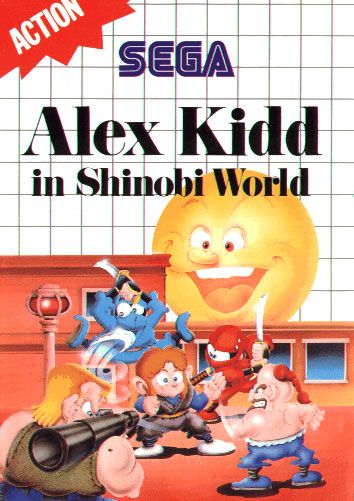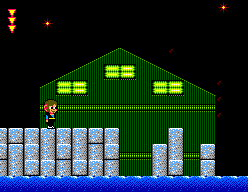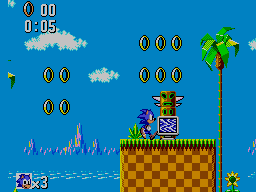Developer: Sega
Publisher: Sega
Release Date: 6-24-1990
It says a lot about the Alex Kidd franchise that the best game in the series doesn’t play like an Alex Kidd game. Not that there was ever that much unity from game to game. There were four Alex Kidd games released in America during the Master System’s short run and each one feels like a different franchise. You’re just not meant to be a mascot when the developer can’t even decide what kind of character you are. At least this time it was a change for the better.
Alex Kidd in Shinobi world is another high-quality game that came to the Master System much too late to make any kind of dent in America. It was part of the last batch of games, and for those who care about such things is one of the few American games to have a blue label instead of a red one. It’s also rare and expensive, but nothing like Sonic the Hedgehog. As the title implies this game combines Alex Kidd visuals with Shinobi styled gameplay. This means that instead of punching frogs Alex is fighting ninjas with a sword. If that’s not an improvement than I don’t know what is. It also has the speed of an Alex Kidd game instead of the deliberate pace of most early Shinobi games. It really is the best of both worlds.
I especially like the level design in this game. The much more famous Miracle World has some awkward levels. They throw everything at the wall and some of it doesn’t stick. Shinobi World has much more unity. It’s a classic side-scrolling platform game and all the better for it. Alex’s sword also gives him a better range, and I like how you can also knock away projectiles. The water levels are a little bit annoying, but less so than the ones in Miracle World. The water levels in Miracle World were all punching blocks, avoiding killer bubbles, and fighting against the current. In Shinobi World they are not perfect, but they play a bit better.
I don’t have any other criticisms besides the normal SMS difficulty. This is another game that without save states I would’ve had a hard time reviewing it at all. At least it’s a game that a person would want to come back and play over and over. If Alex Kidd in the Enchanted Castle played more like this game than the worse version of Miracle World that it turned out to be than Alex Kidd might’ve had a future on the Genesis. The fact that it came out after Enchanted Castle makes it even more baffling. Why did they go back to their dying console instead of giving it a chance on the Genesis? It’s a very good game that deserves more recognition.
Alex Kidd in Shinobi World is almost good enough to crack the top twenty. I’ve rated enough games now where it’s getting harder and harder to get up there, so #22 is still a very good showing. It’s not quite good enough to rate above Tails Adventures’ more complex gameplay, but it rates higher than any other Alex Kidd game and is the second-best Master System game I have played so far. Here’s hoping that the console has even more hidden gems.
(Images are from mobygames.com)

















